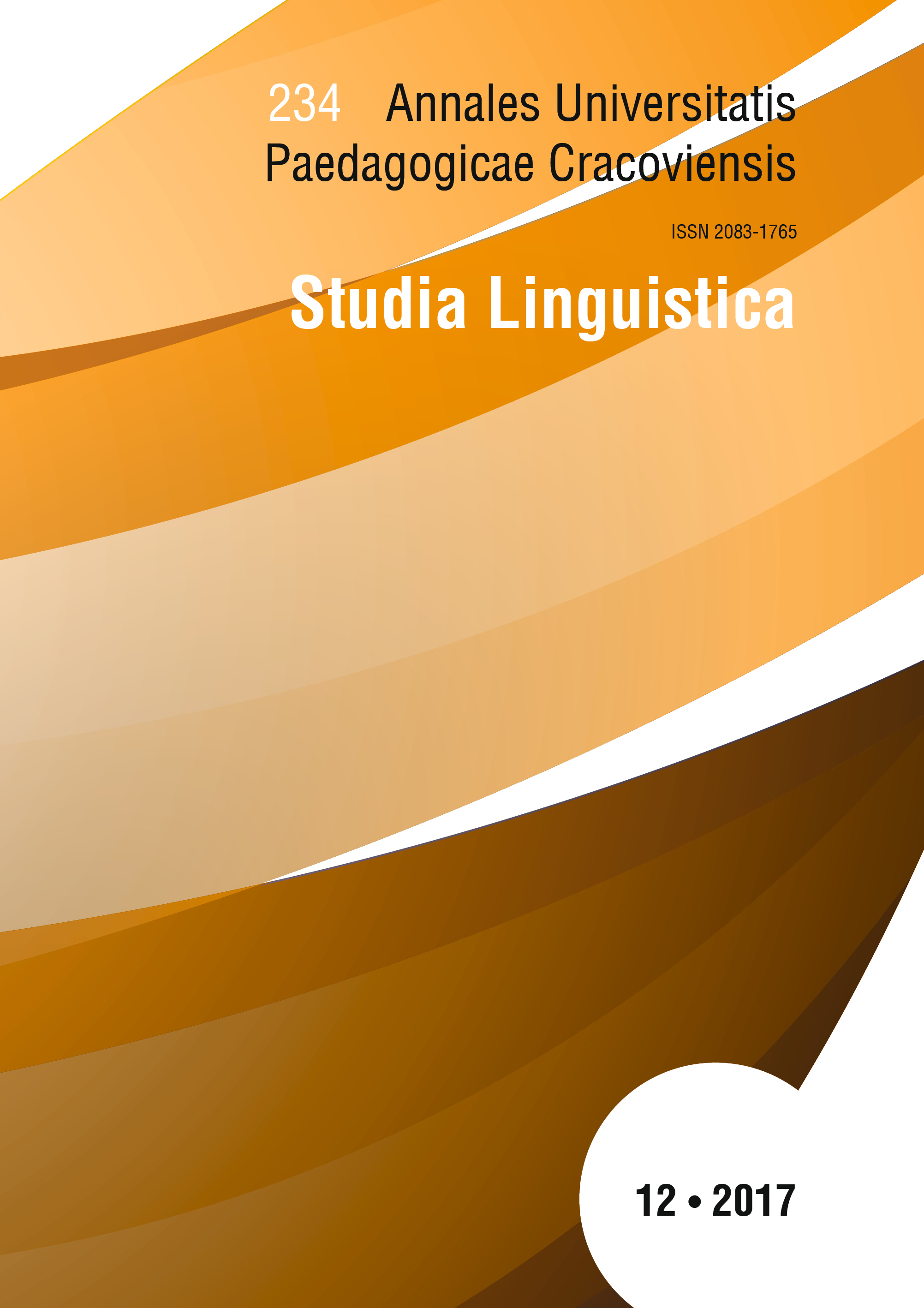The Czech Slavicists on the Polish language
Main Article Content
Abstract
On the basis of a comparison of Polish analytic nouns (e.g. sala gier) and their Czech equivalents (herna) characterised by suffixal word formation, it is possible to conclude that Czech shows a greater degree of inflectionality. This is confirmed by other language features described by Czech Slavicists who investigate the degree of inflectionality of Czech and Polish (and other Slavonic tongues) from the typological point of view.
Downloads
Article Details
Author, submitting a text to the editorial board of the journal “Annales Universitatis Paedagogicae Cracoviensis. Studia Linguistica", certifies that the content of the article has not been published so far and that the work does not violate in any way the copyright or related rights of other person, as well as other rights of third parties, and that no one's rights to the work (or any part thereof) have been missed. After signing the contract, the property rights to the published materials are transferred to the Scientific Publisher of the University of the National Education Commission, Krakow.
“Annales Universitatis Paedagogicae Cracoviensis. Studia Linguistica” is an open access journal, and all its content is made available free of charge to users and institutions under the Creative Commons CC-BY-NC-ND 4.0 license (attribution, non-commercial use, no derivative works). Under this license, the authors agree that their work may be lawfully reused for any purpose, except for commercial purposes, without the prior consent of the author or publisher. Everyone can read, download, copy, print, distribute and process these works, provided that the author's marking and the original publication place are correct. Published texts may not be used to create derivative works (e.g. to translate and publish in another language without the consent of the publisher). This is in line with the BOAI (Budapest Open Access Initiative) definition. "Studia Linguistica" does not charge for submitting or processing articles.
References
Anusiewicz J., 1978, Konstrukcje analityczne we współczesnym języku polskim, Wrocław.
Google Scholar
Buttler D., 1978, Procesy multiwerbizacji we współczesnej polszczyźnie, „Poradnik Językowy”, s. 54–62.
Google Scholar
Damborský J., 1964, Określenia miejsca w języku polskim (w porównaniu z czeskim), „Rocznik Slawistyczny” XXIII, cz. I, s. 47–55.
Google Scholar
Damborský J., 1967, Zestawienia dwuwyrazowe w języku polskim, „Studia z Filologii Polskiej i Słowiańskiej” VI, s. 25–32.
Google Scholar
Damborský J., 1967, Composita w języku polskim, „Poradnik Językowy”, s. 323–333.
Google Scholar
Damborský J., 1999, Polština a franština ve vzájemném vztahu. Język polski i francuski we wzajemnym stosunku, Ostrava.
Google Scholar
Damborský J., 2007, Roztrząsania literackie. Studia o języku polskim, Katowice.
Google Scholar
Lotko E., 1981, Polština a čeština z hlediska typologického, Olomouc.
Google Scholar
Lotko E., 1986, Čeština a polština v překladatelské a tlumočnické praxi, Ostrava.
Google Scholar
Lotko E., 1997, Synchronní konfrontace češtiny a polštiny (Soubor statí), Olomouc.
Google Scholar
Lotko E., 2009, Srovnávací a bohemistické studie, Olomouc.
Google Scholar
Szczepańska E., 1994, Uniwerbizacja w języku czeskim i polskim, Kraków.
Google Scholar
